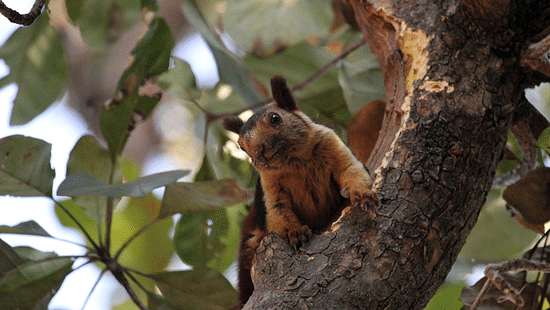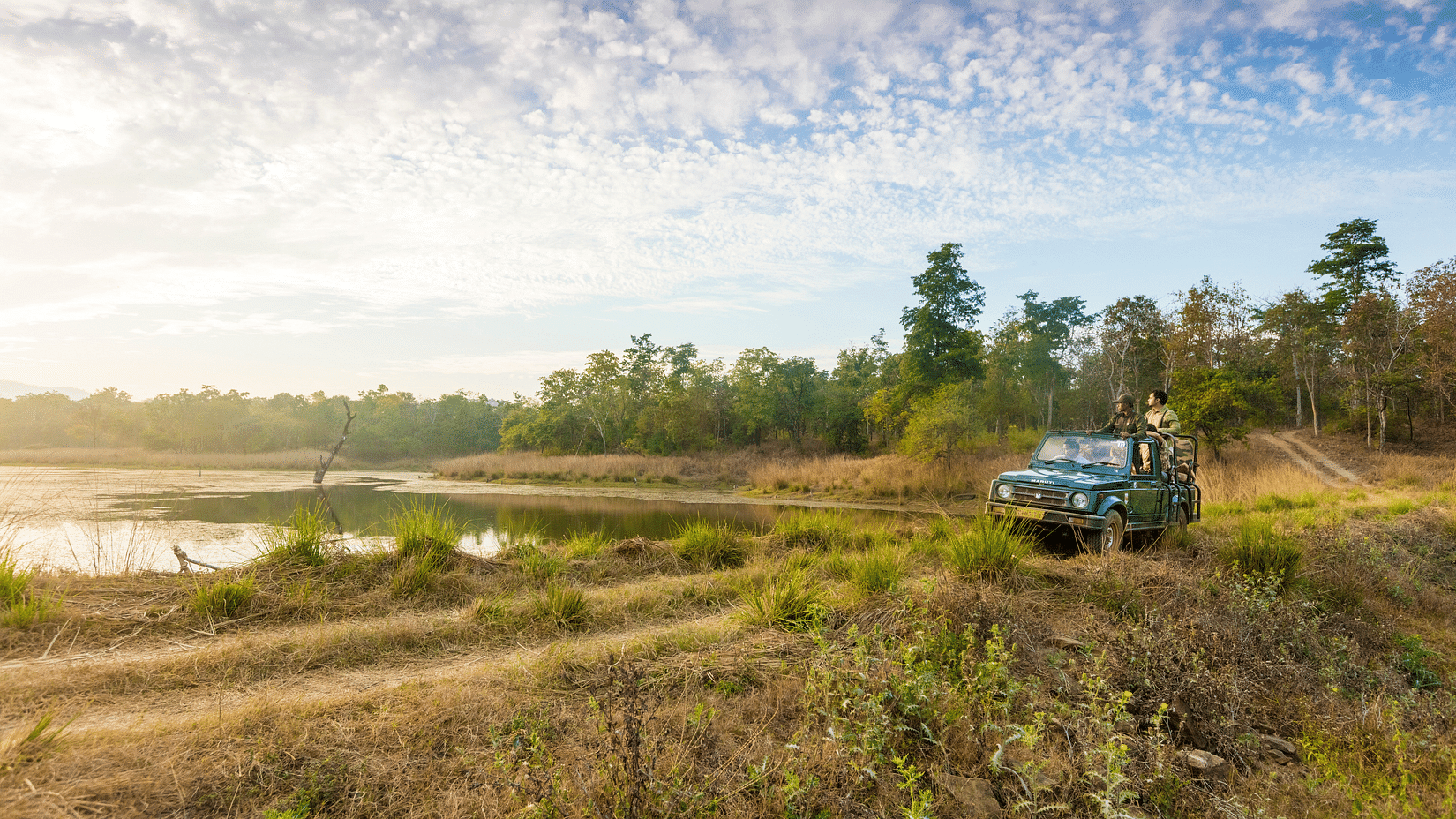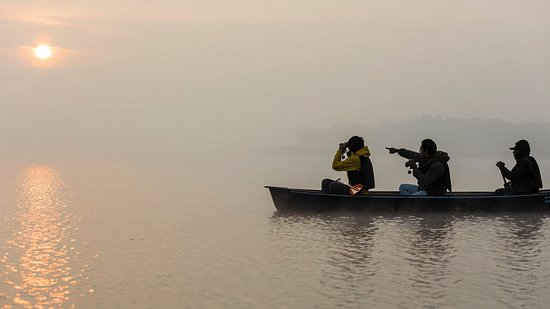- The White Lady Sings
- JEHAN NUMA’S “MAGNA CARTA” on its “HOSPITALITY ROOTS”
- Wild at Heart
- BHOPAL MON AMOUR
- Baloo the bear
- Bhopal: A neglected treasure
- Satpura – A magical wilderness
- Bhopal Through The Eyes of Time
- Satpura Safari
- Bhopal: A Neglected Treasure
- Exploring the Wilderness of Madhya Pradesh
- Farm to Soul
- Tribes of Madhya Pradesh
- The Reign of the 4 Queens of Bhopal
- Bhimbetka Caves - Glimpsing Into the Past
- Places to Visit in Satpura National Park

The Satpura Tiger Reserve is the largest tiger reserve in Madhya Pradesh and comprises 3 protected areas; the Satpura National Park, the Bori Wildlife Sanctuary and the Pachmarhi Sanctuary. Although this park is lesser known, it is like a second home to me. My first exposure to wildlife safari was here way back in the late 1980’s when I was a child. Ever since then the wilderness has had a special place in my heart. Back in those days’ wildlife safari was nothing like what it is today. Permission had to be taken by the Divisional Forest Officer and the place to stay was the forest rest house. One such special rest house was in the Churna forest located deep inside the Bori Wildlife Sanctuary. As a child I made multiple visits to this rest-house and stayed with family and friends for days experiencing an almost exclusive nature-based holiday. I was lucky to see a plethora of wildlife on these visits including leopards, sloth bears, wild dogs and a number of herbivores and birds. This was it; the wildlife bug had hit me and most of my childhood memories are from this and other wild landscapes.



Village Relocation
Back in those days and until more recently, the entire Satpura tiger reserve was dotted with several villages. The residents of these villages, mostly indigenous communities, were largely dependent on forest produce for their livelihood. They would collect non-timber forest products like different types of flowers, fruits, herbs, honey etc which they would then sell in the market contributing to their income. They would also do subsistence farming on small land parcels. They would usually plant wheat, maize, rice and some millets depending on the season and this would help them store grain to eat for the entire year. Livestock like cattle and goats were also kept by these communities and these animals would regularly graze in the forest. All these human activities caused significant pressure on the forest and its denizens. Over the last decade the forest department, as part of the mandate in tiger reserves, started voluntarily relocating these villages so that this pressure reduces and space is left behind for wildlife to thrive. The Satpura Tiger Reserve has had one of the most successful village relocation exercises of any tiger reserve where almost 40 villages have been successfully relocated from within the reserve to its periphery. The habitat restoration in these erstwhile villages has enabled tremendous repopulation of herbivores and carnivores alike.



Biodiversity Hotspot

Satpura is blessed with a diverse landscape. Mountains, rivers, dry forests, evergreen patches, meadows, gorges and cliffs all combine to form one of the most exciting tiger habitats in Central India. The Satpura Mountain range itself is believed to be a land bridge between the Western Ghats and the Eastern Himalaya and therefore some unique species like Malabar Giant Squirrel and Malabar Whistling Thrush are only found in Saptura in Central India. These forests are home not just to tigers but also to sloth bears, leopards, wild dogs, enormous gaur, sambar, four-horned antelope, muntjac and many small mammals. The tiger reserve is a birding paradise with over 270 species recorded in an annual bird survey that has been conducted since 2018. Some attractive birds include Indian Skimmer, Black Crested Bulbul, Spotted Creeper, Black-capped Kingfisher, Crested Hawk Eagles, Ospreys, Painted Snipes and many more. The national park has several waterways and the rivers harbour the first documented population of Eurasian Otter in Central India. The forest department has also reintroduced the critically endangered Hard Ground Barasingha from Kanha National Park to Satpura. This landscape is a true biodiversity hotspot.



Exclusive tourism

For tourists visiting Satpura National Park and Bori Wildlife Sanctuary is a delightful experience. Here there is a deliberate attempt to focus on low volume but high-quality wildlife experience. Patrons can enjoy serene non-motorized activities like the walking safari or the canoeing adventure on the river. The tiger reserve management has introduced a very interesting camping program that can be done in expedition format or as an overnight camping experience. The jeep drives of course are on offer and are the best way of sighting big mammals like a leopard, sloth bear, wild dogs and if lucky even the tiger. Adding to the uniqueness of tourism in Saputara, is the night safari where guests can expect to observe rarely seen nocturnal animals like civets, porcupines, jungle cats, owls, and if lucky the rusty-spotted cat which is the world's smallest wild cat. Apart from wildlife, there are also cultural experiences where guests can interact with indigenous communities in some quaint and picturesque villages dotted on the periphery of the park which can be explored on foot or on bicycles.
The Satpura National Park, Bori Wildlife Sanctuary and Pachmarhi Sanctuary form a unique ecosystem that fascinates many. No wonder, this magical wilderness inspired me to develop such a strong interest in wild landscapes and attracted me to spend a large part of a decade exploring the various parts of this magical park. Each day here brings a new experience and the excitement never ends. The Satpura Tiger Reserve has recently been added to the UNESCO tentative list of natural heritage sites in India. It is without a doubt that the magic of Satpura can only be experienced by visiting and this short synopsis can do no more than building an appetite.
The Satpura National Park, Bori Wildlife Sanctuary and Pachmarhi Sanctuary form a unique ecosystem that fascinates many. No wonder, this magical wilderness inspired me to develop such a strong interest in wild landscapes and attracted me to spend a large part of a decade exploring the various parts of this magical park. Each day here brings a new experience and the excitement never ends. The Satpura Tiger Reserve has recently been added to the UNESCO tentative list of natural heritage sites in India. It is without a doubt that the magic of Satpura can only be experienced by visiting and this short synopsis can do no more than building an appetite.
- Aly Rashid,
Director and CEO of Jehan Numa Wilderness








